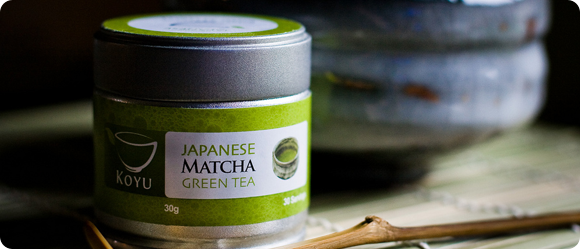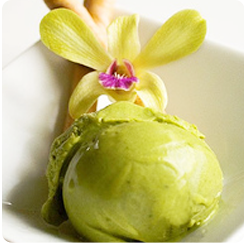FAQs

- How is matcha different from regular green tea?
- The best way to explain this is to say that matcha is the ultimate, essential form of green tea. Though both matcha and regular loose leaf green tea are from the same plant, Camellia sinesis, matcha is the purest and most potent form of tea. This is due to a number of factors.
It is cultivated in a way to increase chlorophyll production, so it is more nutrient rich than almost all other teas. Then, only the youngest, best leaves are picked to become matcha unlike most teas, where leaves from any part of the plant can be used. This means that matcha is higher in L-theanine, the amino acid that calms and focusses the mind.
Matcha is consumed whole meaning the drinker gets 100% of the tea leaves goodness, rather than the 10-15% one normally consumes in loose leaf tea. Thus matcha can be said to be not just a tea, but a wonderful medicine for both body and mind.
- How long will my matcha last?
- That depends entirely on your own needs. Generally for most healthy people once a day is more than enough, so one tin of matcha will last 6 weeks. Some of our customers find that once a day is more than sufficient as it will give them energy for the whole day. However, if you wish to go on a detox or weight loss course, or you are suffering from fatigue, we would recommend drinking matcha about twice a day. Our ingredient grades last much longer of course.
- How long is matcha’s shelf-life?
- Once you open a tin of matcha it’s best to consume it within 3 months. You can prolong its life by keeping it in the fridge away from heat and strong smells. If you don’t open your matcha tin the shelf life is around 1 year. But why would you wait that long before enjoying it?
- Matcha sounds very healthy, does it taste very healthy?
- This we can answer with a categorical no! Matcha is made from the youngest sweetest leaves so based on the 5000plus people we’ve sampled it to, the general consensus is that matcha tastes far better than regular green tea. There is little or no bitter metallic taste so often found in lower grade teas. So even people who have professed a horror of green tea have become enthusiastic converts. It is also extremely versatile so like coffee it can be made exceedingly strong so that it tastes like an intense hit of green tea that leaves other teas seem very pale and uninteresting by comparison. However it can be diluted to everyone’s particular taste. And you can add honey or milk or lemon, blend with fruit etc to create what is delicious for you. Basically if you don’t like how matcha tastes, you haven’t explored its possibilities enough.
- Why is Matcha so expensive compared to regular green tea?
- Certain products, like fine wines or artisan foods are by their nature expensive. Matcha can be considered the wine of teas. Most green teas are machine picked and need no further processing. Matcha, like white tea consists of the youngest finest leaves that are handpicked and need to be ground slowly to retain their nutritional value. The whole process is akin to wine-making in that it takes the best leaves, cultivated and selected for optimum quality which are then blended and ground to create the jade powder that is so full of goodness. Because of the stringent care taken, how few leaves are deemed good enough to become matcha, and the expertise needed at each stage, matcha is very expensive to produce. Even in Japan any decent blend of matcha will cost in the region of €25. The more exclusive blends can easily reach €80 an ounce. If you locate matcha at a price that seems too good to be true, it usually is. Cheap powdered green tea can be produced by air pulverising the leaves, robbing them of much of their nutritional content. Top grade tea can be distinguished by its vibrant colour and sweet rich taste.
- What is the difference between the different grades?
- The difference is in the leaves. Before the tea leaves are ground down to powder, tea leaves from different fields, different plants and even parts of the plant are all chosen by the master blender for taste, depth and smoothness. The more the younger sweeter leaves are used, the smoother and mellower the taste, and the more calming and focusing the effect. This is due to the amino acid, L-theanine, that calms and focuses the brain and is excellent for combating cravings for cigarettes, chocolate etc. Our tinned teas contain more of this amino acid than our ingredient blends and the more expensive our tinned teas, the smoother and richer the taste, and the more powerful the calming effect. While some find that the Japanese matcha is perfect for them, others notice big differences when they step up to the Ceremonial or Premium blends. This is for each person to experience for themselves.
- Can the grades be used for the same purposes?
- Not really. Generally speaking, the higher the grade, the better it will taste as an unadulterated tea. The premium blend is the best for Koicha, the thick syrupy tea ceremony style tea. The Ceremonial is good for Usucha, the slightly thinner tea ceremony tea, while our Japanese matcha can be added to smoothies or even used as a food ingredient as the extra astringency holds up better in combination than the better grades. Our ingredient grades are a little too astringent to be enjoyed as teas but combine excellently for lattes, confectionery etc. The latte mix is best for smoothies and lattes only as it is quite sweet in taste. These guidelines are not set in stone so you are free to use as you wish, but it seems almost a crime to throw premium matcha into a blender for example. But once you buy you can do as you please.
- Is matcha more expensive than coffee or regular tea?
- Matcha seems expensive compared to regular tea but one tin of matcha can last as long as six weeks since many of our customers only need to drink matcha once a day to get its fantastic benefits, it works out at about 60 cents per dayfor a drink that may give you energy for the whole day. A lot less than one takeaway latte and croissant you may be buying everyday to keep you going. One of matcha’s most obvious benefits is its craving killing ability. Numerous customers have reported that they were finally able to break their coffee habit due to matcha. Similarly for sweets and cigarettes, both expensive habits. Regular steeped teas can be a lot cheaper to buy once off, and thats great if you’re buying them for their taste, but if you want real green tea benefits, to eschew matcha for teabags is false economy.

